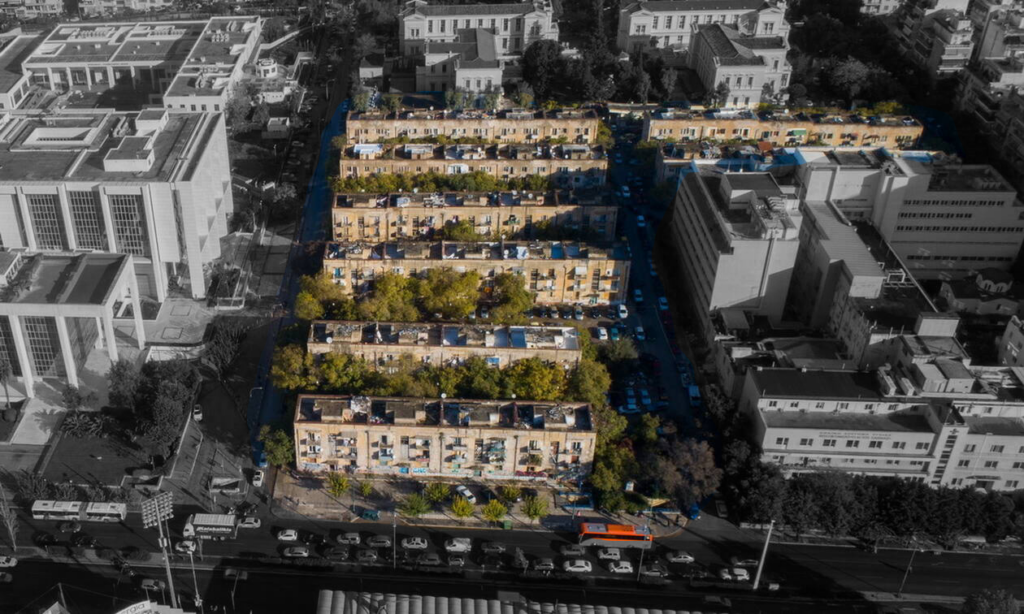The building complex of Prosfygika was built in 1933 to accommodate refugees from Asia Minor. Thus, in these circumstances, a lively neighbourhood with community characteristics was established, consisting mostly of working class people. In 1944, the anti-fascist partisans used Prosfygika as a shelter against the Greek and British state army; the bullet marks can be seen on the facades of the buildings to this day, as well as the guerrilla monument which has been erected on the front of Prosfygika and reminds us daily of the history of the place. Today, it is one of the largest building complexes in the centre of Athens, which has not yet accepted the gentrification and exploitation that comes from big capital and the state apparatus. It is a place of strategic importance since it is located between two pillars of power – on one side the Supreme Court and on the other the General Police Directorate of Attica.

Through the conditions of the social struggles that took shape during 2008-2010, some of the squatters living in the refugee neighbourhood realized that collectivisation is the only way to address common problems, to survive against impoverishment, to drive out the organised mafias and to organise against the multifaceted repression and terrorism of the state.
The political events of 2008-2010 pointed to the need to rally an organised political body in the neighbourhood and to form a social counter-proposal to the existing one. In 2010, on the initiative of some autonomous squatters, the first steps were taken to create the Assembly of Squatted Prosfygika (SY.KA.PRO). Today most of the neighbourhood is occupied and inhabited.
After almost 13 years of activity of the Assembly of Squatted Prosfygika, the neighborhood has been filled with life, transforming into the largest community (spatially and numerically) in Greece.
The basis of the community is self-organization through assemblies, through individual working groups, self-organized structures etc.
The structures of the community answer to the needs of the community in terms of collective and common use. The formation of self-organized structures is a revolutionary process and a real counter-proposal for the organization of society and life outside the state and capitalism. Some typical examples of the Structures of the Squatted Prosfygika Community are: the Bakery Structure, the Women’s Structure, the Children’s Steki and Self-Education Structure, the Collective Skipping structure, the Clothing Structure, the Logistics Structure, the Internet Structure, the Technical Group, the Library Structure, the Health Structure etc.
The community is the organized collective body of Prosfygika neighbourhood and solidarians, which are organically connected to each other on a practical, political, statutory, perspective and comradeship level. It is a horizontal self-organized socio-political project of struggle of the social base. It is based on the principles and values of freedom, equality, autonomy and solidarity through self-organization, horizontality, codecision, circlicity, commitement and participation. It encloses tools of the wider revolutionary movement. It’s main characteristics and aspects are the communal ownership of resources, structures and infrastructures. It is organized on the basis of anti-statism, anti-capitalism, anti-fascism, anti-sexism and international solidarity. It consist of a set of individuals and relations, structures and infrastructures that are formed and composed on the basis of a common field.
They are not formed on the basis of a national, relational, religious or racial sign but on the basis of a common political project, a common political culture and a common perspective. It creates autonomous political structures and relations which are obtaining a relative material self-sufficiency and which are collectively self-institutionalized based on the capabilities/possibilities of each one and according to his/her needs. What in political imaginary terms is defined as a Commune.
